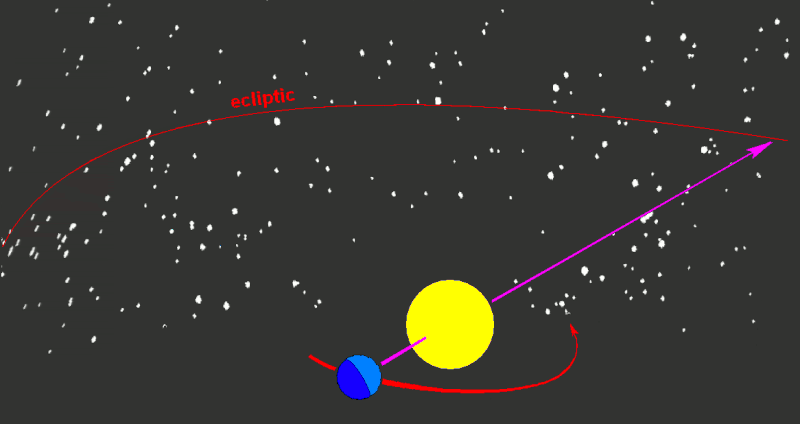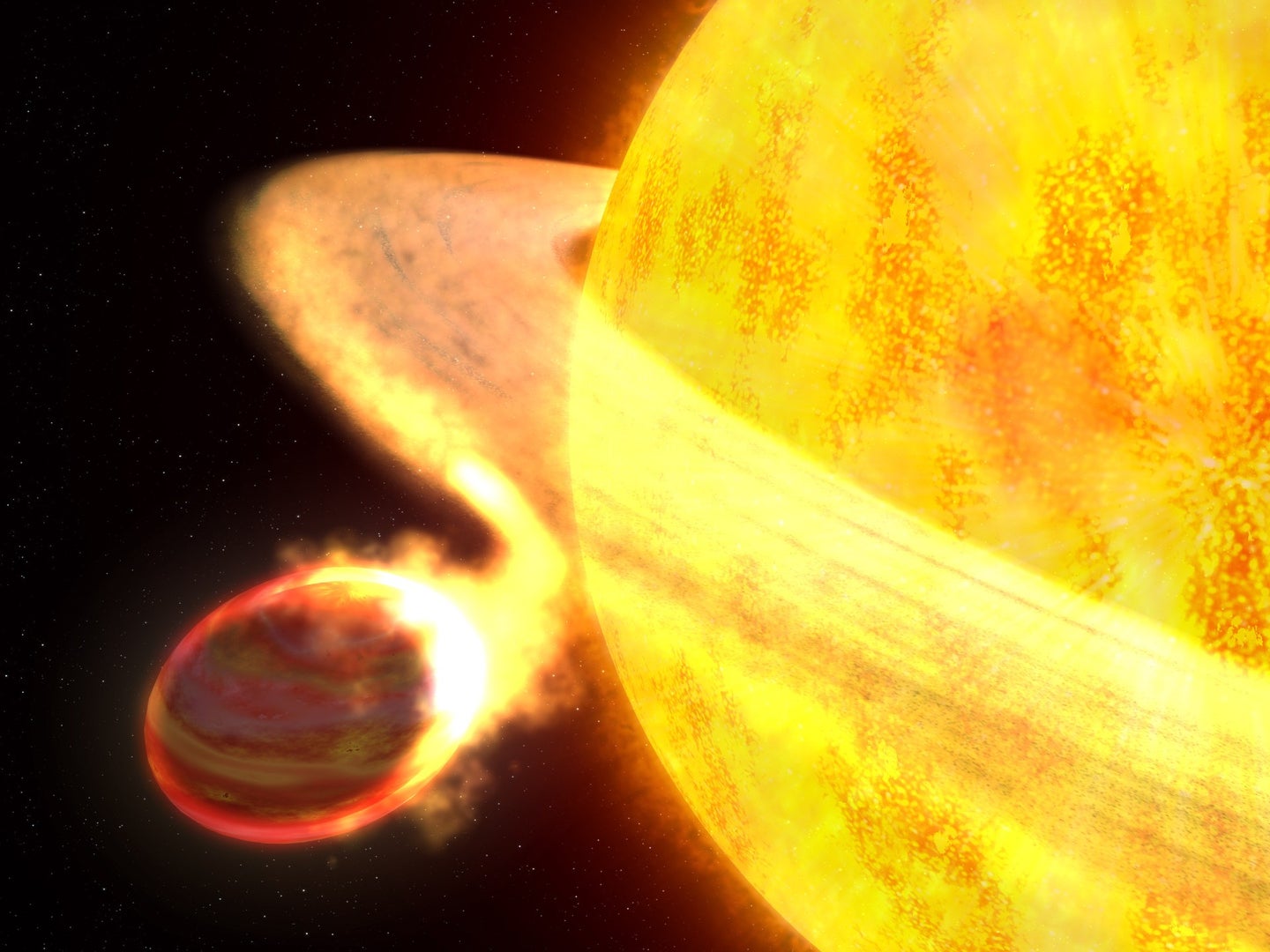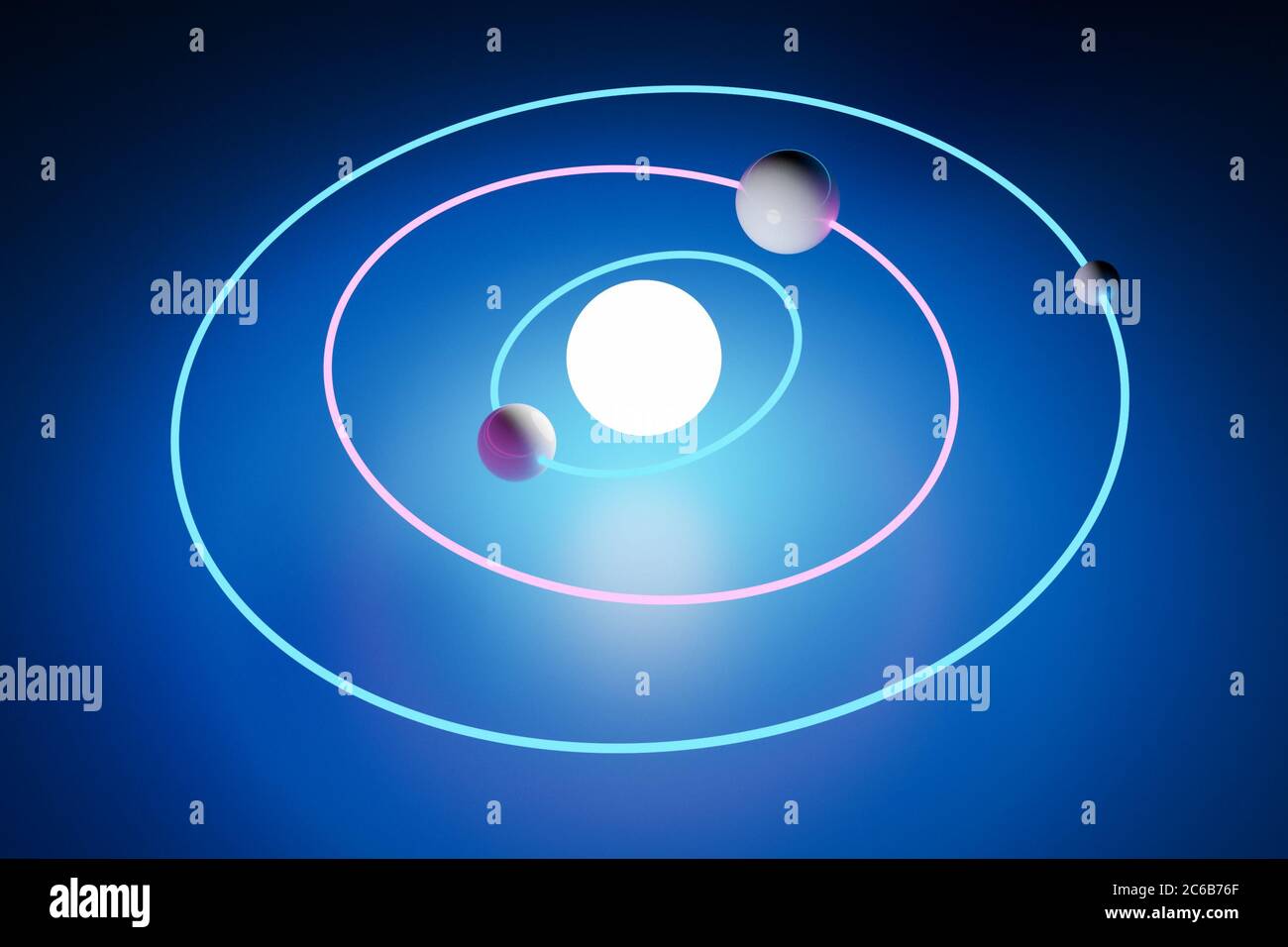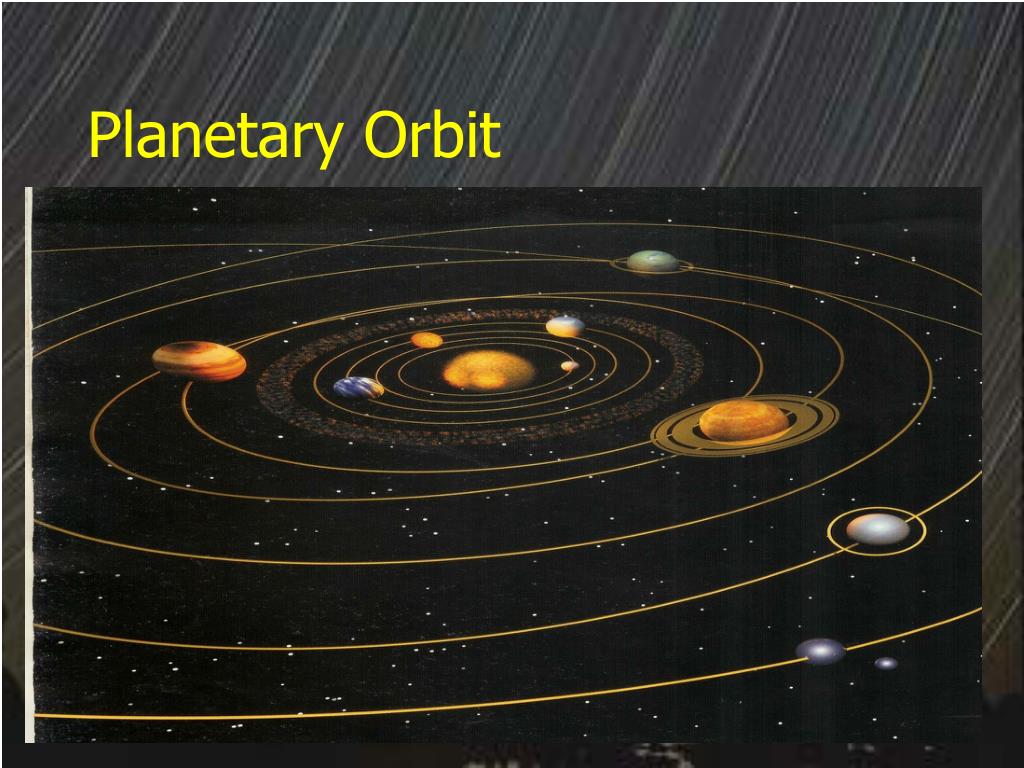The Size and Shape of Orbits. Figure below shows the relative sizes of the orbits of the planets, asteroid belt, and Kuiper belt. In general, the farther away from the Sun, the greater the distance from one planet’s orbit to the next. The orbits of the planets are not circular but slightly elliptical, with the Sun located at one of the foci (see opening image).
3d illustration model of a solar system with orbiting planets in orbits around the sun on blue background. Simple geometric shapes Stock Photo – Alamy
This article is for students grades 5-8. An orbit is a regular, repeating path that one object in space takes around another one. An object in an orbit is called a satellite. A satellite can be natural, like Earth or the moon. Many planets have moons that orbit them. A satellite can also be man-made, like the International Space Station.

Source Image: earthsky.org
Download Image
Kepler’s First Law describes the shape of an orbit. The orbit of a planet around the Sun (or a satellite around a planet) is not a perfect circle. It is an ellipse—a “flattened” circle. The Sun (or the center of the planet) occupies one focus of the ellipse. A focus is one of the two internal points that help determine the shape of an

Source Image: earthsky.org
Download Image
Letter O with an Orbital Shape. Planet Logo Vector Template Stock Vector – Illustration of brand, global: 267472029 Size and Distance Our solar system extends much farther than the eight planets that orbit the Sun. The solar system also includes the Kuiper Belt that lies past Neptune’s orbit. This is a sparsely occupied ring of icy bodies, almost all smaller than the most popular Kuiper Belt Object – dwarf planet Pluto. Beyond the […]

Source Image: popsci.com
Download Image
What Is The Shape Of A Planet’S Orbit
Size and Distance Our solar system extends much farther than the eight planets that orbit the Sun. The solar system also includes the Kuiper Belt that lies past Neptune’s orbit. This is a sparsely occupied ring of icy bodies, almost all smaller than the most popular Kuiper Belt Object – dwarf planet Pluto. Beyond the […] May 3, 2022An ellipse is an oval shape. This means that sometimes a planet is closer to the sun than at other times. A planet’s speed changes as it moves along this path. The planet speeds up when passing closest to the sun and slows as it gets farther away from the sun. Each planet orbits the sun at a different speed.
Sun-like stars eat planets surprisingly often | Popular Science
They had no scientific base. Planetary orbital paths were depicted as they would appear to an observer on static sun. These were assumed as true paths of the planets in space. While formulating his laws on planetary motions, Johannes Kepler used observations only for few planets. 3,194,497 Planets Images, Stock Photos, 3D objects, & Vectors | Shutterstock

Source Image: shutterstock.com
Download Image
Why are things in space round? They had no scientific base. Planetary orbital paths were depicted as they would appear to an observer on static sun. These were assumed as true paths of the planets in space. While formulating his laws on planetary motions, Johannes Kepler used observations only for few planets.

Source Image: yahoo.com
Download Image
3d illustration model of a solar system with orbiting planets in orbits around the sun on blue background. Simple geometric shapes Stock Photo – Alamy The Size and Shape of Orbits. Figure below shows the relative sizes of the orbits of the planets, asteroid belt, and Kuiper belt. In general, the farther away from the Sun, the greater the distance from one planet’s orbit to the next. The orbits of the planets are not circular but slightly elliptical, with the Sun located at one of the foci (see opening image).

Source Image: alamy.com
Download Image
Letter O with an Orbital Shape. Planet Logo Vector Template Stock Vector – Illustration of brand, global: 267472029 Kepler’s First Law describes the shape of an orbit. The orbit of a planet around the Sun (or a satellite around a planet) is not a perfect circle. It is an ellipse—a “flattened” circle. The Sun (or the center of the planet) occupies one focus of the ellipse. A focus is one of the two internal points that help determine the shape of an

Source Image: dreamstime.com
Download Image
New dwarf planet discovered beyond Neptune In celestial mechanics, an orbit (also known as orbital revolution) is the curved trajectory of an object [1] such as the trajectory of a planet around a star, or of a natural satellite around a planet, or of an artificial satellite around an object or position in space such as a planet, moon, asteroid, or Lagrange point.

Source Image: newatlas.com
Download Image
Distance Mars Earth Royalty-Free Images, Stock Photos & Pictures | Shutterstock Size and Distance Our solar system extends much farther than the eight planets that orbit the Sun. The solar system also includes the Kuiper Belt that lies past Neptune’s orbit. This is a sparsely occupied ring of icy bodies, almost all smaller than the most popular Kuiper Belt Object – dwarf planet Pluto. Beyond the […]

Source Image: shutterstock.com
Download Image
PPT – Planetary Orbit PowerPoint Presentation, free download – ID:2360075 May 3, 2022An ellipse is an oval shape. This means that sometimes a planet is closer to the sun than at other times. A planet’s speed changes as it moves along this path. The planet speeds up when passing closest to the sun and slows as it gets farther away from the sun. Each planet orbits the sun at a different speed.

Source Image: slideserve.com
Download Image
Why are things in space round?
PPT – Planetary Orbit PowerPoint Presentation, free download – ID:2360075 This article is for students grades 5-8. An orbit is a regular, repeating path that one object in space takes around another one. An object in an orbit is called a satellite. A satellite can be natural, like Earth or the moon. Many planets have moons that orbit them. A satellite can also be man-made, like the International Space Station.
Letter O with an Orbital Shape. Planet Logo Vector Template Stock Vector – Illustration of brand, global: 267472029 Distance Mars Earth Royalty-Free Images, Stock Photos & Pictures | Shutterstock In celestial mechanics, an orbit (also known as orbital revolution) is the curved trajectory of an object [1] such as the trajectory of a planet around a star, or of a natural satellite around a planet, or of an artificial satellite around an object or position in space such as a planet, moon, asteroid, or Lagrange point.